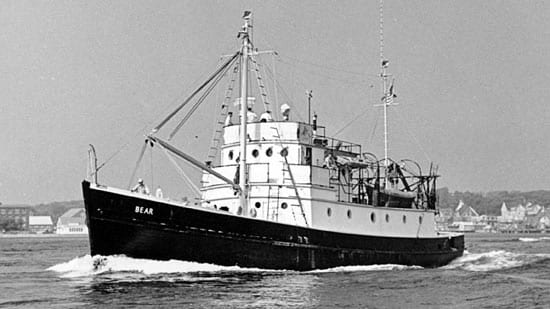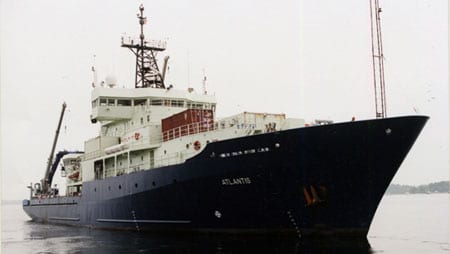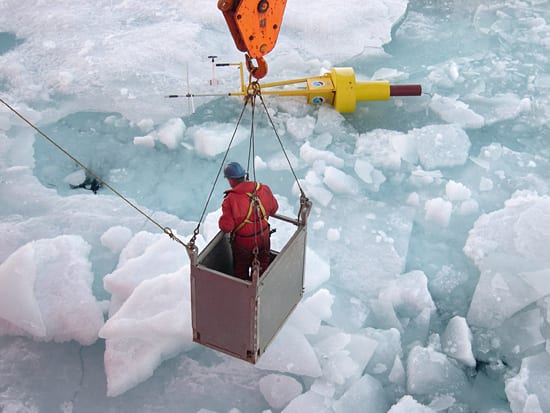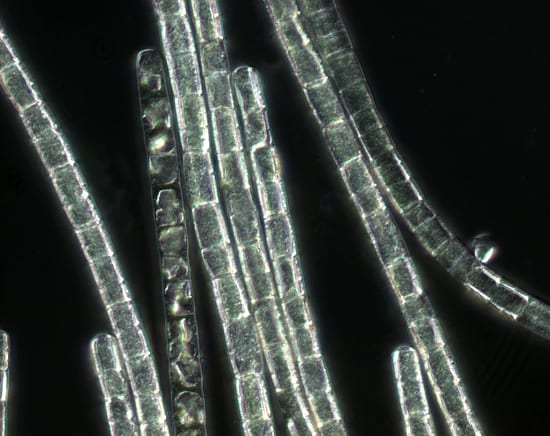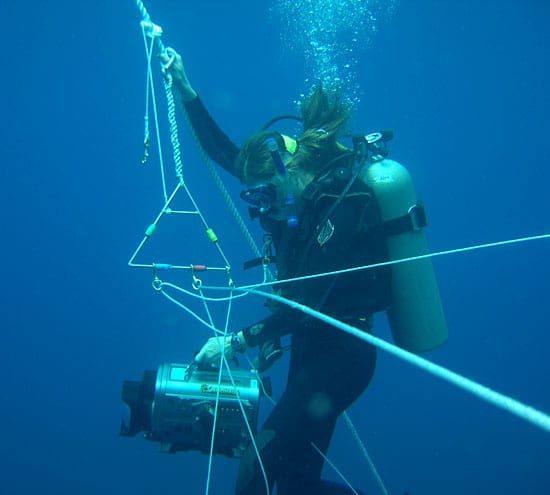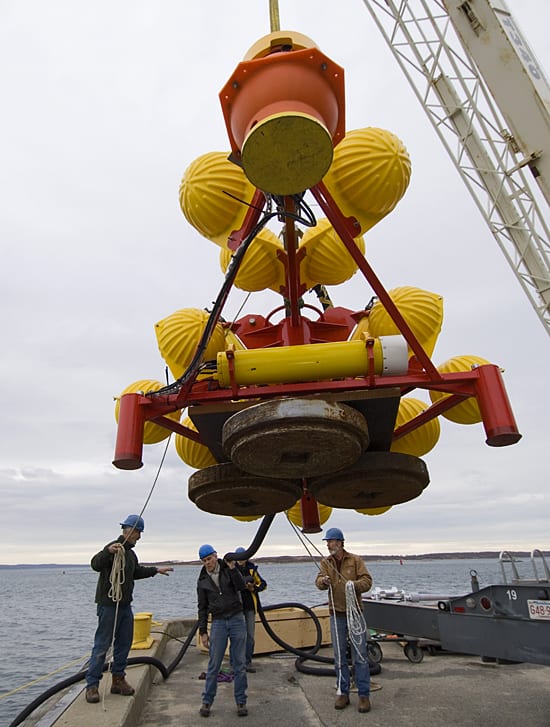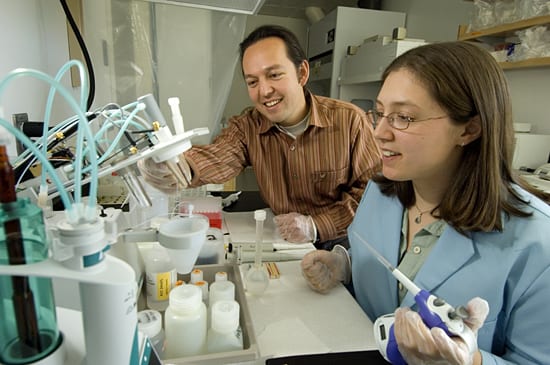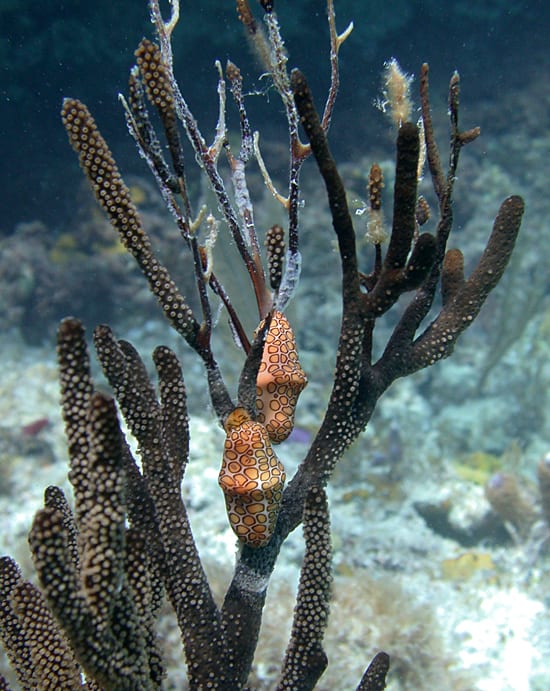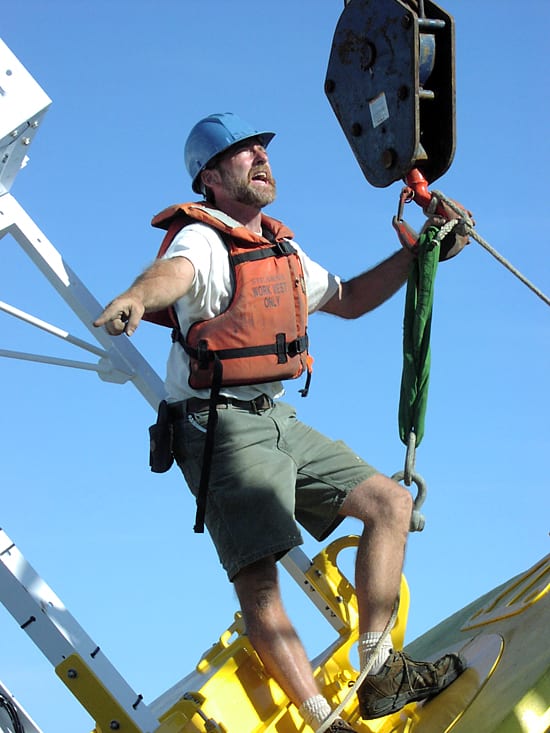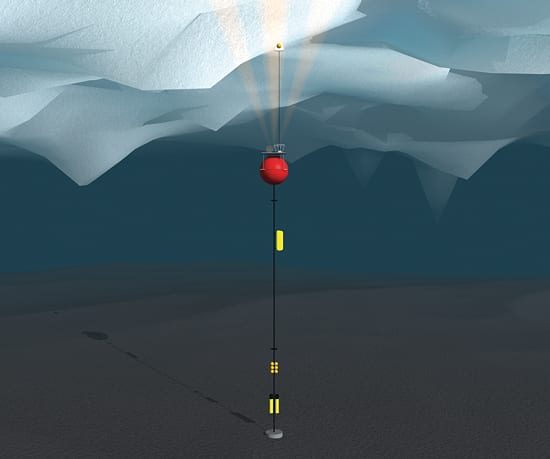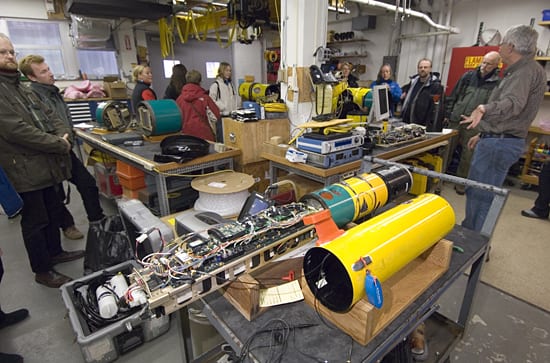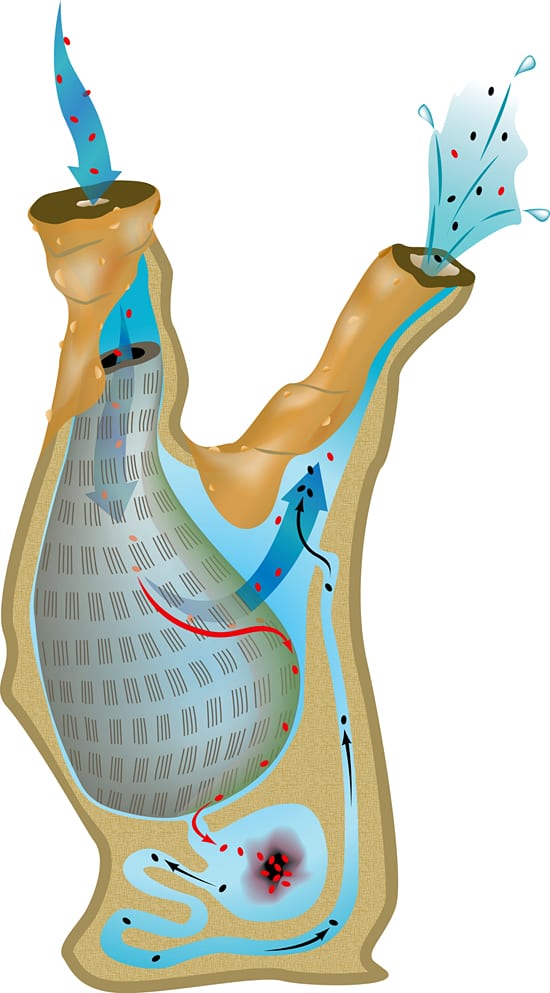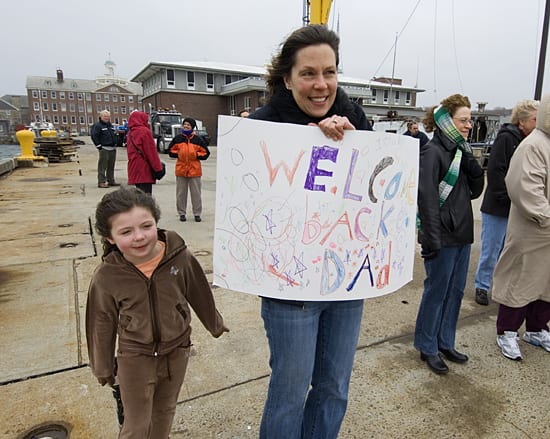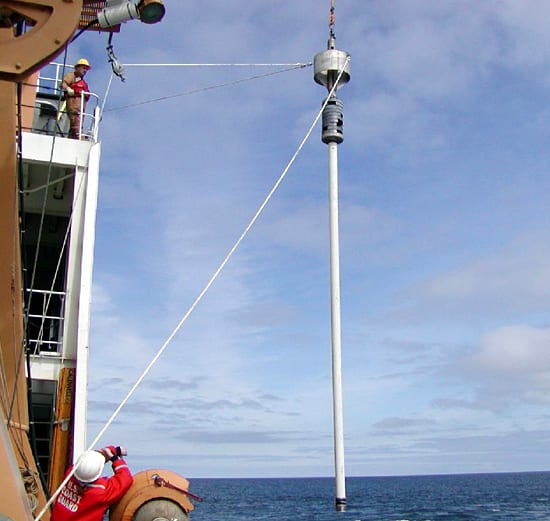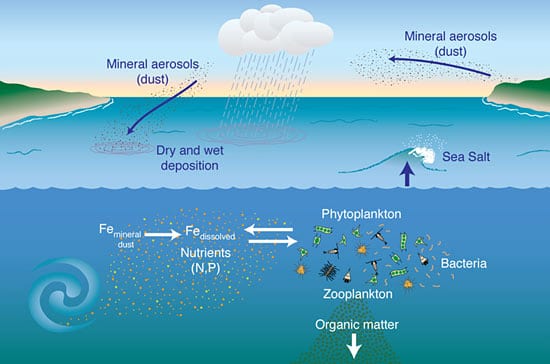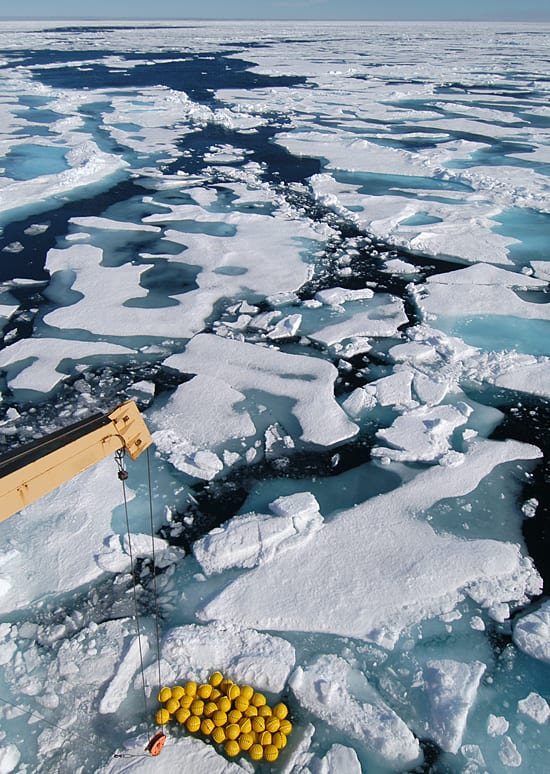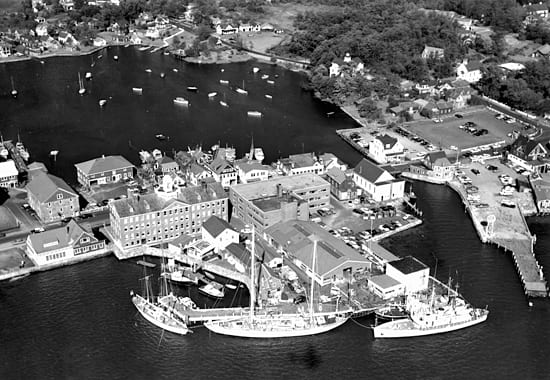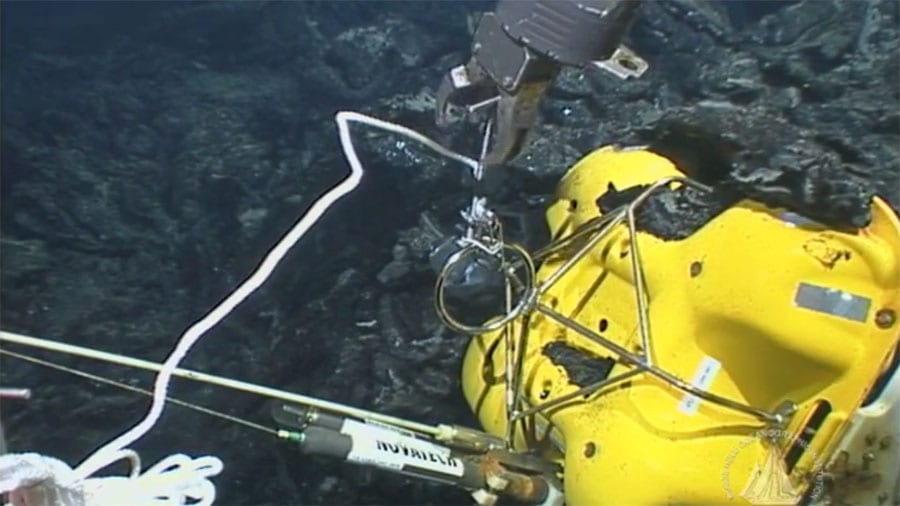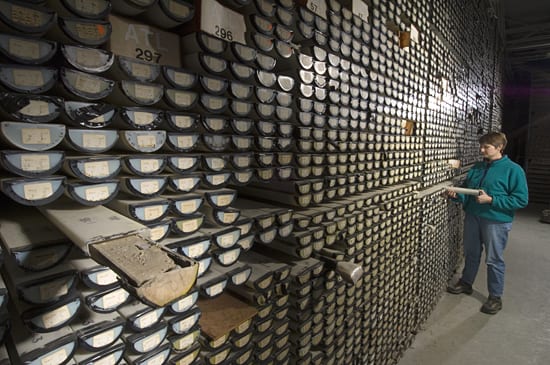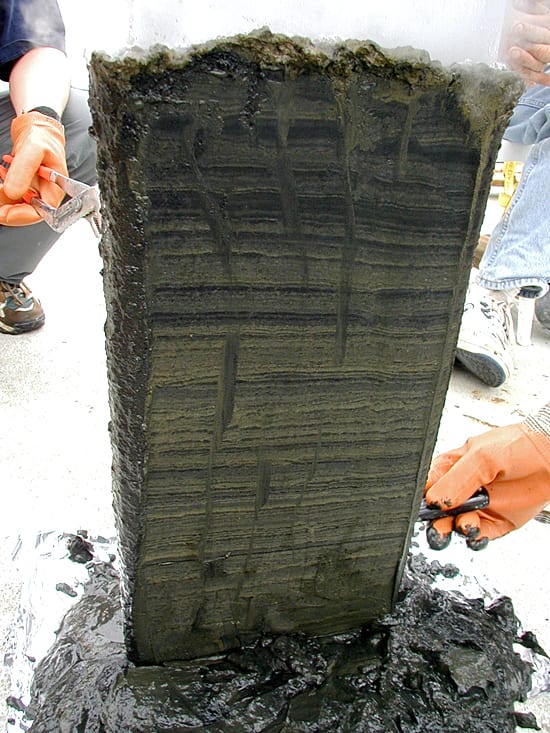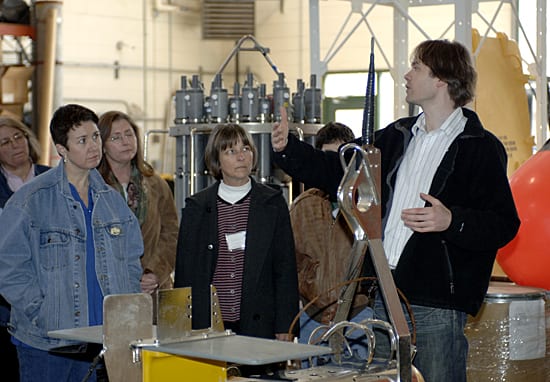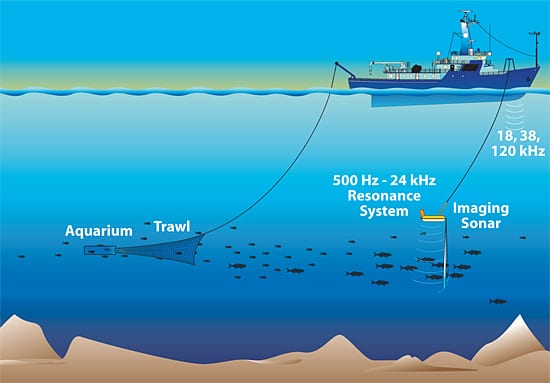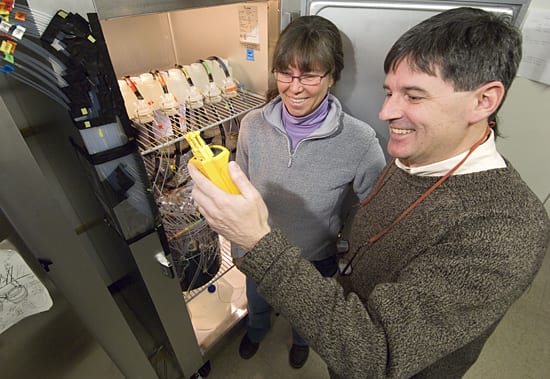Multimedia Items
History of WHOI Ships
Three Atlantises
Ice, Ice Baby
WHOI senior engineering assistant John Kemp is lowered in a basket to recover a buoy from the ice during a summer 2004 expedition to study the upper layers of the…
Read MoreChain Gang
MIT/WHOI graduate student Annette Hynes captured this microscope photograph, or micrograph, of a colony of Trichodesmium at 1000x magnification. A form of primitive, nitrogen-fixing cyanobacteria, Trichodesmium are often found in…
Read MoreTotally Tangled Tethers
MIT/WHOI Joint Program student Kelly Rakow attempts to untangle the tethers attached to her fellow divers during a “blue water” dive off the Pacific coast of Panama. The tether system…
Read MoreYellow Submarine Volcano Watcher
Will Ostrom, Keith von der Heydt, and Neil McPhee (from left to right) prepare to lower and test the base of the Real-time Offshore Seismic Station (RTOSS) buoy off the…
Read MoreWhat’s Left When the Glacier Retreats?
Glaciated ridges tower over Route 1 and the Vatnsskarð mountain pass (west of Varmalið) in Iceland. WHOI students and scientists visited the region in June 2006 as the capstone on…
Read MoreDaily Dose of Vitamins
Graduate student Erin Bertrand (right) and assistant scientist Mak Saito, biogeochemists at Woods Hole Oceanographic Insitution, have found evidence that B12, an essential vitamin for people, also plays a critical…
Read MoreSlug-fest
Brightly colored slugs feed on a variety of sea whips and sea fans that populate tropical coral reefs. “They munch with their modified tooth,” said WHOI biology doctoral student Kristen…
Read MoreWHOTS Up?
Jeff Lord, a WHOI senior engineering assistant, directs the deployment of the WHOI Hawaii Ocean Timeseries Station II buoy. In cooperation with the University of Hawaii and its Hawaii Ocean…
Read MoreStretching for More
WHOI engineers and scientists developed the “Arctic winch” in order to reach up and take critical measurements of surface waters in polar oceans, while minimizing the risk of getting their…
Read MoreShow and Tell Day
WHOI senior engineer Ben Allen (right) shows off the REMUS laboratory to European colleagues participating in the the Galathea 3 expedition. Researchers from Europe made a port call in Massachusetts…
Read MoreJust a little squirt
Sea squirts are tunicates a type of sea life with a firm, rubbery outer covering called a “tunic,” from which the name derives. Sea squirts feed on algae and bacteria…
Read MoreWelcoming Party
Sophie (left) and Nancy Edson await on the WHOI dock for the return of Jim Edson marine meteorologist, husband, and father. A former WHOI scientist, now at the University of…
Read MoreSediment Straw
The WHOI-built Giant Gravity Core is deployed by technicians and crew members of the U.S. Coast Guard icebreaker Healy in the Bering Sea in June 2003. This sediment collector can…
Read MoreFortified with Essential Minerals
Dust storms can sweep iron-rich particles from the continents into the atmosphere, and these “mineral aerosols” then fall into, or are rained into, the oceans. Once in the water, the…
Read MoreNested In The Ice
A crane’s yellow arm floats above a bevy of yellow floats, retrieving a set of moored instruments from crushing broken ice in the Beaufort Gyre, north of Alaska, in 2005.…
Read MoreFab Four
An aerial view of the WHOI dock circa 1960 shows the Institution’s four research vessels at the time: (from left) Aries, Atlantis, Crawford, and Bear. Unlike many other ocean science…
Read MoreJason to the Rescue
During an expedition to the East Pacific Rise in May 2007, using the dexterous mechanical arms of the remotely operated vehicle Jason, pilots and scientists removed lava chunks from a…
Read MoreLibrary of Mud
Assistant Curator Ellen Roosen examines cores in the WHOI Seafloor Samples Laboratory, which houses some 24,000 core sections from more than 3,800 seafloor sites. (Photo by Tom Kleindinst, Woods Hole…
Read MorePeeling Back the Layers
Sediments accumulate over time in layers on the seafloor, and they typically contain fossil shells of surface-dwelling microscopic marine animals. These shells incorporate radiocarbon and other isotopes from seawater that…
Read MoreTeachers Become Students
Arctic researcher Peter Winsor describes some ocean profiling equipment to a group of teachers during a tour for the WHOI Teachers Workshop. The workshops are held twice each year for…
Read MoreFishing with Sound
Scientists have adapted a low-frequency sonar system originally designed to survey seafloor geology to identify fish and zooplankton. The research team towed a low-frequency broadband imaging sonar near schools of…
Read MoreClimate Controlled
In their newly built laboratory, Joan Bernhard and Dan McCorkle seek to culture and grow single-celled organisms that live near the seafloor. Researchers have found that the chemical composition of…
Read More
